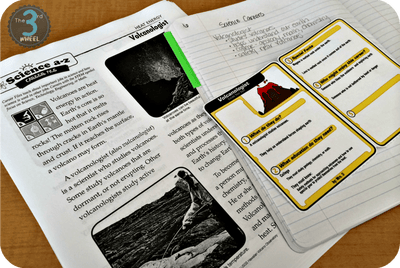Easy Lesson Ideas for Teaching about Famous Scientists & Science Careers
Exposing students to different career tracks can start early in elementary school. Each year our curriculum includes a weeklong unit that focuses on teaching about different careers in science. They study the education needed and tasks required for a variety of different jobs in science.
If you’re looking to teach a similar unit, here’s a great unit outline to help you get started.
Getting started teaching about careers in science
My students use a lot of technology during this unit to help them research different careers in science. One of the biggest resources I like to use is Science A-Z, as it has a bunch of great resources that connect students with careers they may not have even heard of!
If you haven’t heard of it, I totally recommend giving it a try. They offer a free 14-day trial, and there are so many great games, videos, and differentiated science resources that will cover the whole year.
Exploring Science Careers: Unit Overview
Here’s the overview of the unit:
Days 1 & 2: Scientists in History
These first few days I focus on students learning about some scientists from the past. Depending on time, we watch one of the Animated Classics on some of the big scientists (Franklin, Curie, Bell, and more).
However, I always start by finding out more about who my students already know about. We create a big list as a class, but the students must be able to tell me a little about that person’s contribution to getting that person added to our list. Sometimes the list is HUGE, but many years it is 5-6 scientists long.
This is my favorite because I show my students the stack of scientists trading cards (Science A-Z) and they are shocked there are so many scientists. I typically give them some time to explore these in groups before we begin our next activity because there are truly SO many!
Eventually, each student ends up with a scientist and a partner in the class. Their job is to compare and contrast the two scientists using a Venn diagram foldable. I push them to go deep and really think about connections between their scientists, which often come from very different fields and time periods.
It typically takes the kids 20 or more minutes to get beyond the shallow connections (they’re both men, they both did something in science, etc.) and into something deeper (they both developed inventions that improved people’s heath, they both worked in chemistry, etc.). However, with some guidance, they get there.
Days 3 & 4: Science Careers
Once the students know a bit more about some of the big names of science, I like them to get to know more about potential careers they could have.
I love using these articles from Science A-Z (have I mentioned how much I love this site?) because they come in a variety of reading levels and cover a broad range of different careers so all my students are able to find at least one that appeals to them.
As they read they focus on three key things: what the job entails, what education is needed for the career, and who might enjoy this type of job. They use these important details to help them share information about this career with their classmates.
Depending on if we have access to our grade level laptops these days, my students either create a poster in their science journals, an index trading card, or use the ReadWriteThink trading card maker.
On the last day we share our final product, and students get to vote on which career seems most interesting to them. It is great because it links up to our college awareness week, and it gives the kids something to think about as they consider college and career readiness.
Have something great you use to help your students learn about scientists of the past or careers in STEM? Link up and share your ideas!













